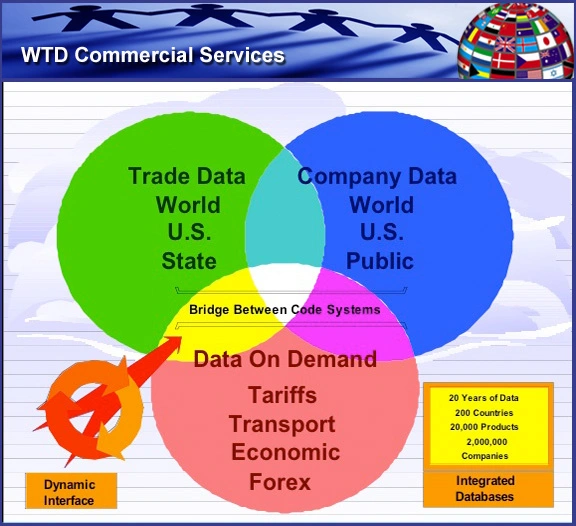Foreign sourcing is one of the predominant applications that many trade data users seek. PIERS and Datamyne are the only TI providers whose products integrate daily shipping manifests from DHS/Customs with statistical and company data from the Census Bureau and D&B respectively. Each boasts of their particular brand of easy-to-use interfaces.
U.S. companies have long turned to overseas sources for cheaper raw materials and components. Utilizing AMS inbound shipment manifests (BOLs) – detailing shipper (exporter), consignee (U.S. importer) along with specifics on the product(s) transported – U.S. manufacturers and distributors can easily identify potential foreign suppliers.
Vetting the list of candidates is another matter. Here, technology can aid to some degree. Various filters can be applied such as preferred country source(s), minimum shipment thresholds, number of other customers (importers) that a particular seller(s) maintains, source history /track record, and diversity of products sold. All these criteria can assist a U.S. company in sifting the list of potential suppliers and is inherent within the BOL data.
In addition to the expected normalization and refinement procedures that respectable TI providers apply to the Customs Data, Datamyne* and PIERS employ supplemental data sources to further enhance the value of the data and application in the sourcing arena.
Connecting D&B company information like credit score, annual sales, key personnel, financials and current contact information to daily (15,000,000 annually) shipment manifests helps narrow the prospect list considerably. D&B (and other vendors) provide a reputable base by which to normalize the dozens of iterations that exist on shipping manifests for any given company, thereby making the vetting process more accurate and meaningful.
Statistical data can be employed to identify which countries are the most popular sources for a particular product. Aggregated values (cost of goods) can be compared to see which countries export said product cheapest. One can also chart overall sourcing and pricing trends (on a monthly basis). Further investigation of trade flow statistics can reveal tariff considerations, transportation costs and preferred port-to-port routes.
Once again, in the end, the best that data and technology can provide is a partial solution to the objective of foreign sourcing. The remaining gaps of data interpretation, contextual understanding and appropriate application require Trade Intelligence of the third kind. Notwithstanding, an informed utilization of TI products such as Datamyne’s new Datamyne 2.0 interface can get a U.S. manufacturer or distributor a long way down the road in identifying new overseas sources for their raw materials or product components.
*Although Datamyne doesn’t currently incorporate the full extent of available D&B data such as credit scores, personnel records or detained financial data, they do currently use it in their normalization processes… and have plans for further integration in the future.


 16/07/2013
16/07/2013 





 “This document is a catalogue of WEB services providing data on global trade. It updates to March2010 the first edition published in 2007. Each service is described in the catalogue according to a form specifying data fields, geographical coverage, temporal span, search criteria and reporting facilities on data records. The information has been derived from WEB sites, email contacts with service providers, trial runs, and interviews with users.”
“This document is a catalogue of WEB services providing data on global trade. It updates to March2010 the first edition published in 2007. Each service is described in the catalogue according to a form specifying data fields, geographical coverage, temporal span, search criteria and reporting facilities on data records. The information has been derived from WEB sites, email contacts with service providers, trial runs, and interviews with users.”






































































































































































































































































































































































